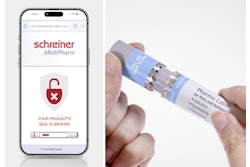A new specialized catheter can fix holes in the heart using a biodegradable adhesive and patch, eliminating the need for open heart surgery in animal studies.
Researchers from Boston Children's Hospital, the Wyss Institute for Biologically Inspired Engineering at Harvard University, Harvard John A. Paulson School of Engineering and Applied Sciences (SEAS) and the Karp Lab at Brigham and Women's Hospital jointly worked on the project and recently published their findings in the Science Translational Medicine.
Although the patch was created last winter, researchers wanted a way to deliver the patch without open heart surgery. That's when the catheter was created.
The catheter device utilizes UV light technology and can be used to place the patch in a beating heart.
So how exactly does it work?
According to a press release, the catheter is inserted through a vein in the neck or groin and directed to the defect within the heart. Once the catheter is in place, the clinician opens two positioning balloons: one around the front end of the catheter, passing through the hole, and one on the other side of the heart wall.
The clinician then deploys the patch and turns on the catheter's UV light. The light reflects off of the balloon's shiny interior and activates the patch's adhesive coating. As the glue cures, pressure from the positioning balloons on either side of the patch help secure it in place.
Finally, both balloons are deflated and the catheter is withdrawn. Over time, normal tissue growth resumes and heart tissue grows over the patch. The patch itself dissolves when it is no longer needed.






















